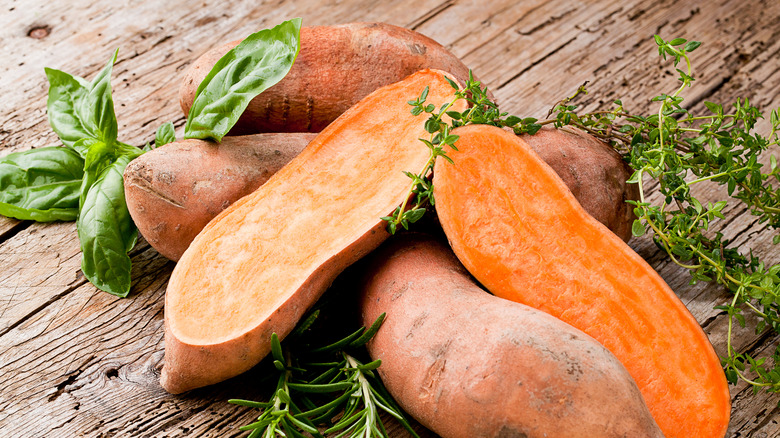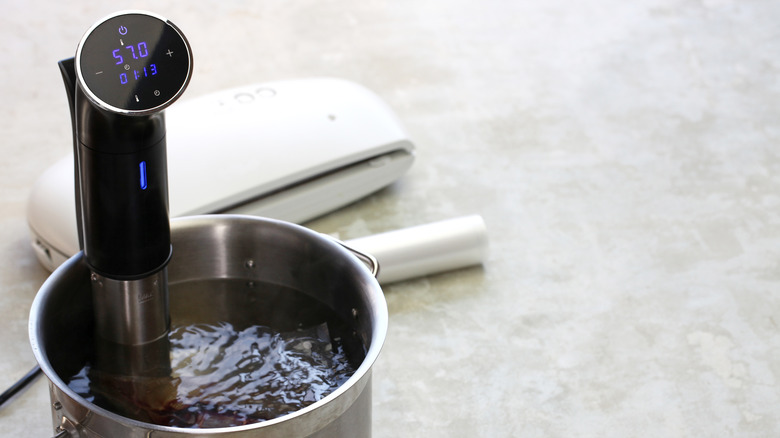Why It's Worth It To Sous Vide Sweet Potatoes
It's no secret that cooking has undergone lots of trends throughout the years. Some have lasted, but others, like gelatin salad and liver loaf, have yet to make a huge comeback. And then there's the sous vide machine, which may very well stick around because it's unique, convenient, and a game-changer for cooking many different foods.
Sous vide, which is French for "under vacuum," involves vacuum-sealing foods in bags that are then placed in a water bath (per Serious Eats). The water can be increased or decreased in temperature to your specific preference, ensuring the food comes out exactly the way you want. For instance, when cooking a steak à la sous vide, you can choose the temperature on the immersion circulator, which means you're also choosing how you want the steak cooked (via Omaha Steaks). Medium steaks, as an example, correlate to immersion circulator temperatures of 135 degrees Fahrenheit to 144 degrees Fahrenheit.
Of course, nothing pairs with meats quite like some perfectly-cooked vegetables, and when it comes to sous vide, the sky's the limit. Sweet potatoes are a great example of a vegetable you can prepare beautifully via sous vide, and there are even some reasons why you might prefer the method over others. So prep your immersion circulator, because we've got the science behind why it's worth it to sous vide your sweet potatoes.
Amplified sweet flavors and textures
There are a few things that happen when you sous vide sweet potatoes. For one, the vacuum seal ensures those flavors are locked in and can't escape, unlike other cooking methods like roasting (per Cook's Illustrated). Second, when the temperature reaches around 140 degrees Fahrenheit and above, several cool things begin to happen within the plant's cells. The membranes break, and that moisture inside starts to seep out (not all the moisture, though). Then, the size of the cells decreases, which affects the limpness of the vegetable in question. After more time in the water bath, molecules like hemicellulose and pectin say goodbye to their sibling, cellulose, as they're both whisked away (cellulose is tough and holds steadfast).
At around 180 Fahrenheit, most vegetables reach the "tender" stage, though starchy vegetables love higher temperatures, typically in the range of 190 Fahrenheit to 198 Fahrenheit according to Cook's Illustrated. And of course, sweet potatoes are positively loaded with starch (per Science Direct).
So, what the heck does all of this mean? Well, it's just a fancy way of saying that sweet potatoes will come out soft and tender when you sous vide them. Taste-wise, Sous Vide Guy mentions that the sweet flavors in sweet potatoes can be amplified even more because their starch undergoes a sugary transformation and becomes maltose (code for sugar that isn't super sweet, via Healthline). So whether you plan on utilizing sweet potatoes for a side dish or a sweet potato pie, whip out that sous vide machine for near-perfect flavors and textures.

